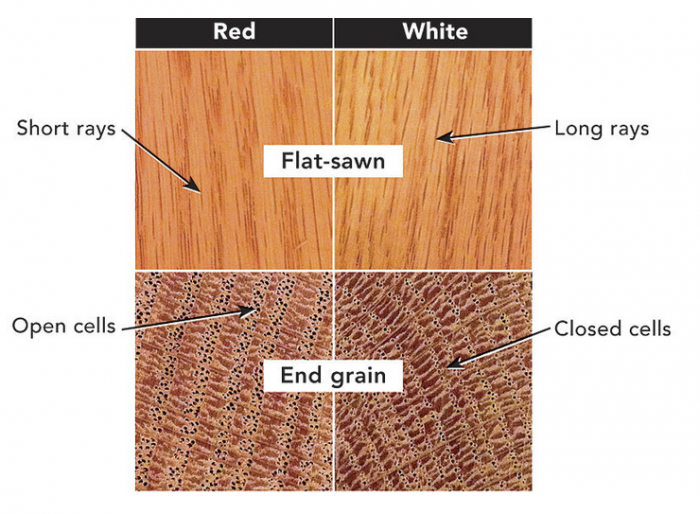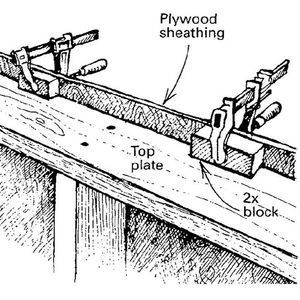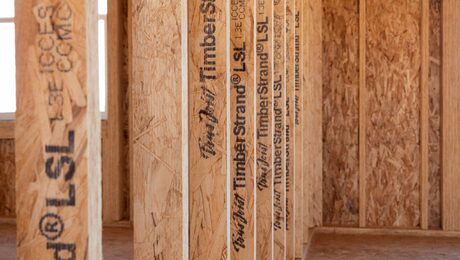
Q:
I’m trying to match some wood in an old house, and although I know it’s oak, I’m not sure how to tell red oak from white oak. Is there a telltale sign?
J. Burke, None
A:
Despite their similar names, these two woods are very different. A side-by-side comparison of red oak versus white oak shows only the slightest differences in appearance. There are other qualities, however, that can help you distinguish differences between the two.
White oak is slightly harder than red oak and is far more durable in exterior conditions, which is why it’s popular in boatbuilding. There are a few ways to help distinguish the two woods, but some clues are more reliable than others. Once you have some experience working with both, you’ll likely be able to distinguish them by something as simple as their smells. White oak is said to have a distinctly sweet smell. For beginners, here are some other helpful tricks.
A good place to start
If the wood is unfinished, color can be a strong indicator. Sometimes the difference in color is subtle, and sometimes it’s obvious. Red oak tends to be reddish-pink, and white oak is light brown. The age and condition of the wood can make differentiating species more difficult, especially because shades of red often fade to brown, which makes the red oak versus white oak color test the least reliable.
Another challenge is that there is only one true species of red oak (Quercas rubra) and of white oak (Quercas alba), but there are 20 other varieties commonly grouped under the “red oak” or “white oak” heading based on their characteristics, so the possible color variations can be significant.
A bit more reliable
If you’re able to make a fresh cut into the wood in question, there are a couple of fairly reliable hints in the grain structure. First, look at the rays. When red oak is flat-sawn, which is the most common cut of lumber, the rays on the surface are rarely more than about 1/2 in. long. By contrast, the rays in white oak are typically at least 1 in. long.
Second, check the end grain. A visual end grain inspection in your red oak versus white oak test reveals more open cells in red oak than in white oak. The reason for this is the continuous nature of red-oak cells vs. the segmentation of white-oak cells. *A red oak versus white oak* pore test shows the white oak pores are plugged with tyloses, or outgrowths, that work to protect the woods from damage. This key difference increases white oak’s resistance to rot and decay.
Here, a wicking test is revealing. If you place red oak with the end grain down in denatured alcohol, the alcohol wicks through quickly, while doing the same thing with white oak results either in no signs of wicking or only slight evidence at radial checks. In fact, the cell structure of red oak is so consistent that you can typically submerge one end of a short piece of red oak in water and blow bubbles through it.
Nearly foolproof
If you have to know for sure, you can do a color-changing experiment. Apply a test spot of a diluted solution of sodium nitrite to the surfaces of the two woods. The solution may darken red oak slightly, but it will turn white oak a deep indigo color, or even black.























View Comments
Slice a 1/16 sliver off, hold it up to some light if you can see through it, then it’s red oak.